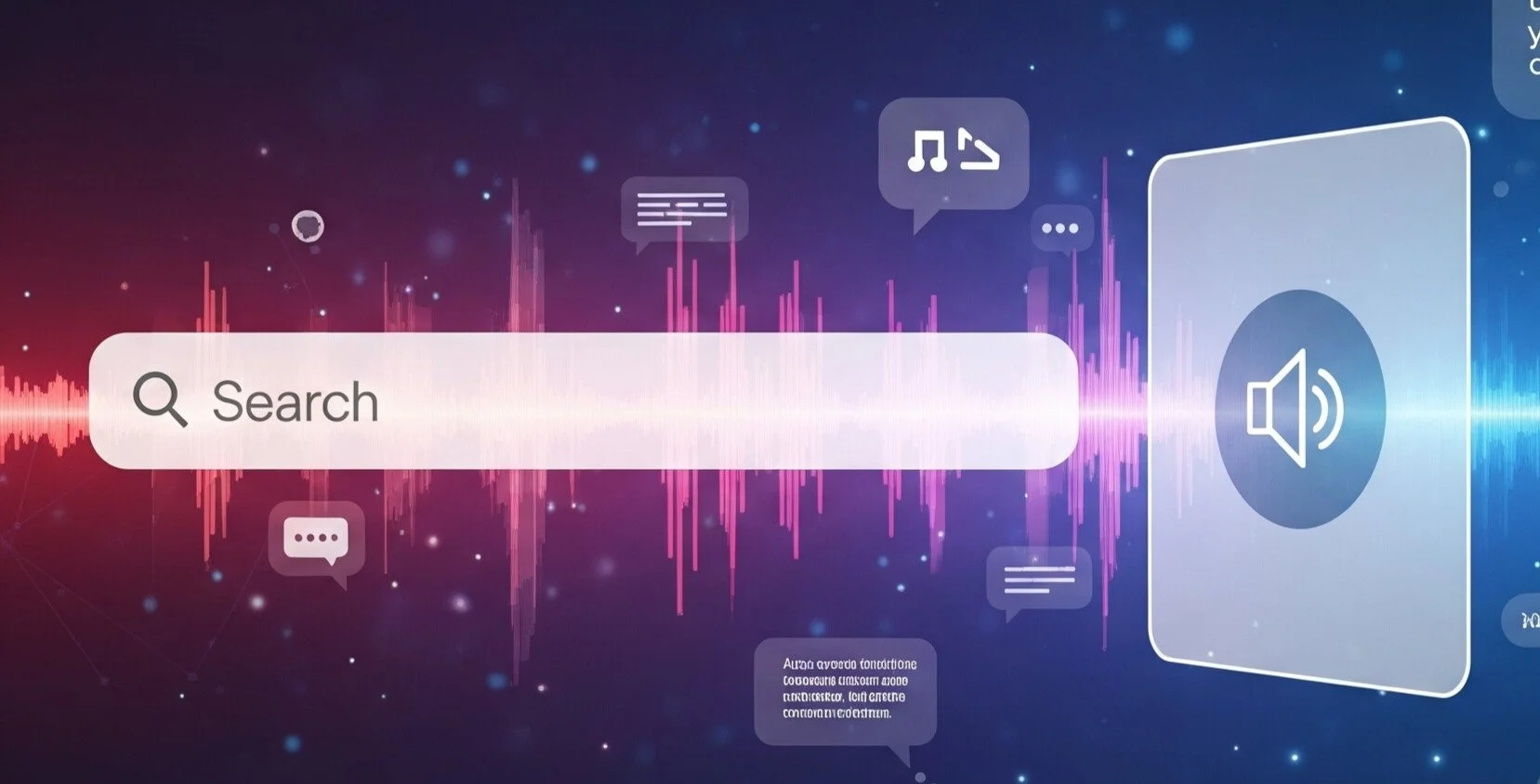Google’s Audio Overviews: A Glimpse Into the Multimodal Search Future
Google search isn’t only about links and text anymore. Over the years, it’s shifted from showing traditional results to offering AI-generated summaries and new ways to explore information. Today, Audio Overviews are entering the picture.
These voice-read summaries expand on what AI Overviews already do, adding another element to users’ search experience. Instead of just reading snippets, people may start listening to them.
This change is a part of something bigger. Google is heading toward a search experience that blends text, video, audio, and interactive formats. For marketers and content creators, this means rethinking how content is created and where it appears. Audio Overviews signal a future where how people find and use information may look vastly different from today.
What Are Audio Overviews and Why Do They Matter for SEOs
Audio Overviews are Google’s latest step toward a search experience that transcends the screen. They work like an AI Overview but add a spoken element. Instead of reading a summary, users can listen to one. The goal is to make search easier to use, especially for on-the-go people who prefer listening.
These summaries are powered by Gemini, the same AI behind existing AI Overviews, and they’re popping up more often. Currently, AI Overviews appear for about 9.5% of desktop keywords and up to 16% of searches in the U.S.
For SEOs, this means people might never click a result at all. If the answer is read aloud or shown at the top, they may not scroll down. That changes how success is measured. Clicks might drop, but visibility is still important. Your content could get quoted in a summary, even if no one clicks through. That makes impressions and brand presence even more important now.
-
Audio Overviews are usually under one minute long. They’re designed to deliver quick, spoken summaries that match the pace of on-the-go searches.
Structuring Content for AI and Audio
If Google will read your content aloud, it needs to be easy to understand and well-organized. This means writing in a clear, natural voice and using a structure AI can follow.
Start with simple formatting: use clear headings, semantic HTML, and short paragraphs. These make it easier for AI to recognize key ideas. Schema markup also helps, especially the SpeakableSpecification tag. This tells search engines which parts of your content are best for text-to-speech. You can highlight short sections, summaries, or definitions, anything that sounds good when read out loud.
Also consider how your content connects to bigger topics. AI models look for context, not just keywords. Cover related ideas, build in relevant internal links, and focus on strong entity relationships. That helps search systems understand your page as part of a broader topic.
Most importantly, write how a person would speak. Conversational language, not overly formal or stuffed with keywords, tends to work better when your content is being spoken.
-
Not officially. Google doesn’t offer a dedicated “audio search” feature. Still, tools like Voice Search and Audio Overviews let users search by speaking and receiving spoken results.
How to Adapt Your Content Strategy
As search shifts toward AI and audio formats, it’s a good time to adjust your content approach. Begin by treating every page like a source of answers rather than a place to rank. User clear structure, cover topics in depth, and focus on what people want to know.
Think about how your content may sound if read out loud. Use natural phrasing, short sentences, and clear takeaways. Schema markup and semantic HTML still matter, especially if you’re tagging parts of your content that are easy to summarize or speak.
It’s also smart to think beyond blog posts. Try turning articles into podcast clips or short audio explainers. Voice-optimized content gives your brand another way to show up in search.
Also, don’t forget what makes you stand out. Original research, clear points of view, and unique insights are harder for AI to summarize and more likely to get noticed.
Here’s a simple breakdown to guide your next steps:
| Focus Area | Action |
|---|---|
| Content Strategy | Entity coverage, topical depth, structured summaries |
| On-Page SEO | Schema markup, semantic HTML, internal linking |
| Authority Signals | Build expert profiles, earn backlinks |
| Diversification | Expand into audio, video, and other formats |
| Analytics | Prioritize impressions and visibility over clicks |
Worried about what changes to Google’s core search products mean for your brand’s visibility? You’re not alone—and you’re right to be paying attention. In this new era of search, where AI is reshaping what users see (and click), it’s critical to have a SEO and AI Search partner who understands how to adapt.
Eyeful’s AI/GEO Readiness Audit helps you understand exactly how prepared your site is for this next wave of discovery and where the gaps are that could cost you visibility
Eyeful Media helps brands stay ahead of these seismic changes, aligning SEO and content strategies with how Google really works today. Let’s future-proof your visibility—reach out to us to build a smarter search strategy for 2025 and beyond.

